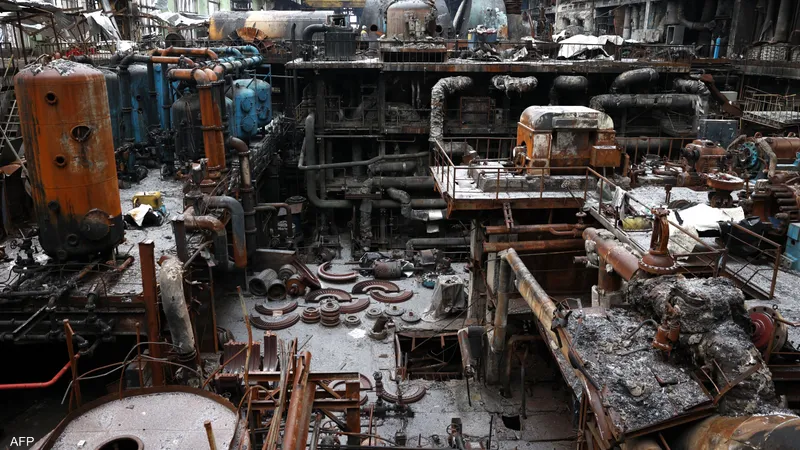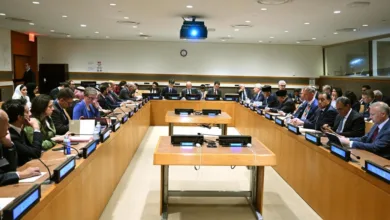Ukraine: Russia Targets Major Thermal Power Plant in Kyiv Region

Ukraine’s Ministry of Energy reported on Monday that Russian forces attacked a thermal plant in the Kyiv region. The assault disrupted electricity supply, leaving homes, hospitals, kindergartens, and schools without power or heating. Emergency teams and energy specialists are working on-site to restore electricity and assess the damage. This attack marks one of the most significant strikes on Ukraine’s energy infrastructure since the beginning of the conflict. The incident also raises concerns about the safety and resilience of critical facilities in conflict zones (plant).
The Attack on Kyiv’s Energy Infrastructure
Russian forces specifically targeted the Tripolskaya Thermal Power station, one of the largest in the region. According to local sources, multiple explosions occurred, with eyewitnesses reporting up to seven significant blasts. The attack caused widespread power outages not only in Kyiv but also in surrounding districts, highlighting its strategic significance. Analysts note that targeting energy facilities is a deliberate move to destabilize civilian life and pressure the Ukrainian government (station).
The Tripolskaya station is essential to Ukraine’s energy network. The plant produces nearly 57% of the electricity consumed by regional companies, supplying not only Kyiv but also Cherkasy and Zhytomyr. Its destruction would severely affect local industry, hospitals, and other vital services. The Ukrainian government is coordinating with international partners to ensure that emergency measures are effective and that the plant’s operations can be restored as quickly as possible.
Tripolskaya Thermal Power Plant Overview
The Tripolskaya Thermal Power Plant has been operational since 1969 and is located on the banks of the Dnipro River, 13 kilometers from Kyiv. This supplier has long been critical to the region’s electricity needs, providing power to both residential and industrial sectors. Analysts warn that the attack is not just an isolated event but part of a broader strategy to weaken Ukraine’s infrastructure (supplier).
The plant has historically maintained a stable output, making it a key element in Ukraine’s energy strategy. Any prolonged downtime could result in cascading effects across the economy, affecting small businesses, factories, and essential services. Emergency repairs are underway, but experts caution that the damage may take weeks to fully address.
Humanitarian Impact
The human cost of the attack has been significant. Thousands of civilians have been left without heating and electricity during a time when energy needs are critical. Hospitals are struggling to provide uninterrupted care, and schools and kindergartens have been forced to close temporarily. Emergency shelters have been set up, but the scale of disruption remains enormous. Analysts emphasize that protecting energy infrastructure is vital not only for economic reasons but also for safeguarding civilian well-being.
Local residents reported multiple explosions, creating panic and uncertainty across Kyiv and nearby towns. The psychological impact of such attacks is profound, with communities facing fear of recurring strikes and prolonged power shortages (explosions).
Strategic Implications
Attacking the Tripolskaya Thermal Power Plant demonstrates a broader strategy to undermine Ukraine’s stability. Energy infrastructure is a high-value target because its disruption affects multiple sectors, from healthcare to education. By targeting critical assets, Russian forces aim to weaken public confidence and pressure the Ukrainian government into concessions. Analysts highlight the importance of rapid response, security upgrades, and international assistance to mitigate the risks posed by future attacks (importance).
Energy security measures have been reinforced across the country. Surveillance, cybersecurity protocols, and emergency power backups are being implemented to prevent similar incidents. International support is helping Ukraine to enhance resilience and maintain continuity of essential services.
Economic Consequences
The strike on Tripolskaya could have extensive economic repercussions. Industries dependent on continuous power are facing production delays, while small businesses encounter operational challenges. Agricultural and logistical sectors may also be affected by electricity shortages. Experts suggest long-term investments in diversified energy sources, infrastructure upgrades, and emergency preparedness programs to prevent similar disruptions in the future (grid).
Political Dimensions
Infrastructure attacks often carry political weight. This strike may influence public opinion, diplomatic negotiations, and international relations. Ukraine’s resilience and prompt response send a signal of determination and stability to domestic and foreign audiences. Meanwhile, the Russian strategy appears focused on creating both economic and social pressure. The event underscores the delicate balance between military operations and political consequences. Additionally, young voters in Ukraine and elsewhere are closely observing these developments, which could shape their perspectives on governance and leadership (voters).
International Response
The global community has reacted with concern over the attacks. Governments and organizations have urged protection of critical energy facilities and support for civilian populations. Technical aid, strategic guidance, and funding are being provided to Ukraine to mitigate the impact. Cooperation is crucial to maintain stability, prevent further humanitarian crises, and reinforce the resilience of essential infrastructure.
The attack on the Tripolskaya Thermal Power Plant highlights Ukraine’s vulnerability in the face of modern warfare targeting civilian infrastructure. It disrupted electricity and heating for thousands of people, created economic and social challenges, and emphasized the strategic value of energy assets in conflict zones. Moving forward, Ukraine must prioritize security, infrastructure resilience, and international partnerships to protect critical facilities. The coordinated response and rapid restoration efforts demonstrate the importance of preparedness in mitigating the effects of such attacks.




